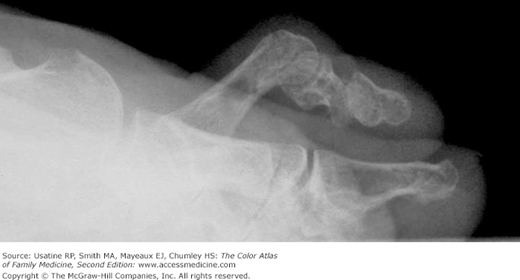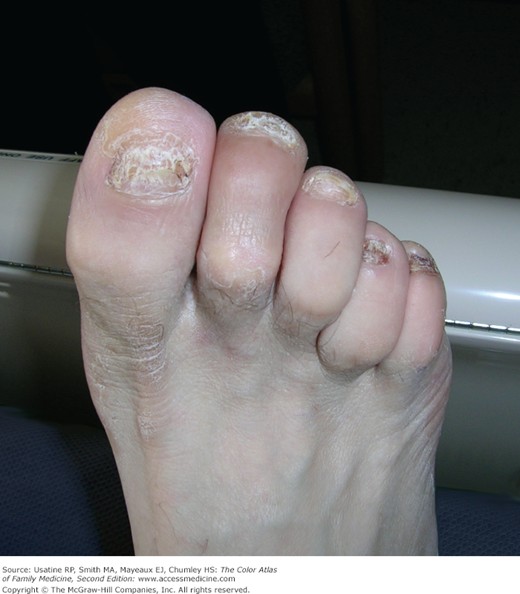Patient History
A 44-year-old woman presented with pain in the ball of her left foot on weight-bearing. She works as a nurse and walks most of her 12-hour shift. Two months ago she noticed a new deformity of the second digit of her left foot (Figure 209-1). Her second digit was contracted with a nonreducible proximal interphalangeal joint and reducible metatarsophalangeal (MTP) joint. Her x-ray is seen in Figure 209-2.
She was referred to a podiatrist who diagnosed an acute isolated hammer-toe deformity. At the time of surgery a plantar plate rupture at the MTP joint was found. The podiatrist fused her proximal interphalangeal (PIP) joint and released her extensor tendon and dorsal capsule at the MTP joint to reduce the deformity. She began protective ambulation in a surgical shoe on postoperative day 3. An internal fixation wire, which was used to fixate the fusion site, was removed in 4 weeks. She returned to work and her regular activities within 6 weeks of the operation.
Introduction
Hammer-toe deformity is a flexion contracture in the PIP joint of a pedal digit, resulting in plantar flexion of the middle phalanx at the PIP joint with dorsal angulation of the proximal phalanx at the MTP joint. Hammer toes are associated with imbalance of soft-tissue structures around the joints in the digits and are often progressive. Surgical correction is required when deformity interferes with function.
Synonyms
Epidemiology
Hammer-toe deformity is the most common digital deformity, and it can affect up to 60% of adults. The second digit is most commonly affected.1
Etiology and Pathophysiology
- Genetic and hereditary factors.
- Abnormal biomechanics (cavus or high-arch foot, flatfoot deformity, loss of intrinsic muscle function, and hypermobile first ray).
- Long metatarsal and/or digit.
- Systemic arthritidis.
- Neuromuscular diseases such as Charcot-Marie-Tooth disease (Figure 209-3).
- Ill-fitting shoes.
- Trauma.
- Iatrogenic causes.
Stay updated, free articles. Join our Telegram channel

Full access? Get Clinical Tree





